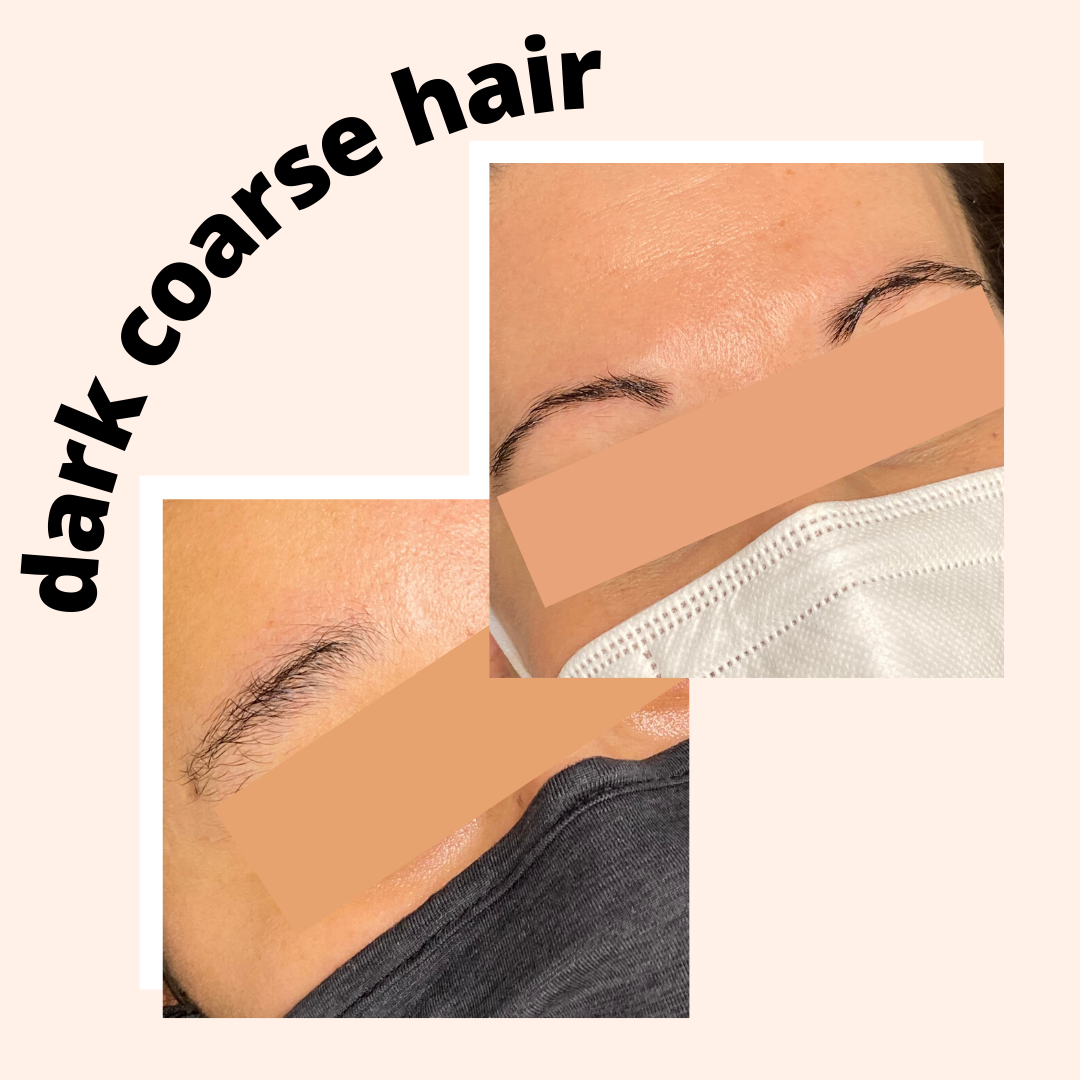got questions?
These are some frequently asked questions regarding microblading and shading. Read through these honest answers and feel at ease!
frequently asked questions
what exactly is microblading & shading?
Microblading is a manual technique of permanent makeup for your eyebrows which creates extremely fine looking hair strokes. The pigment is applied with a specific tool that has a row of several small needles mimicking the appearance of a blade. This "blade" is used to create thin hair like marks in the skin. The pigment is bladed just below the epidermis and the most shallow part of the dermis, making extremely fine natural looking hair strokes.
Shading has many names in the industry: microshading, ombre brows, powder brows etc. This technique is preformed with a machine that creates an ultra soft dusting of pigment behind the hairs. Shading can be added to a microbladed brow to create a more dimensional look, or be preformed alone.
how do I know which technique is best for me?
Ultimately, I will help to direct you to the best technique or combination of techniques to get you to your desired goal brow. Both techniques can be preformed with all color ranges in pigment and can be applied as soft or as bold as requested. Microblading is your hair, plus more hairs. Shading will give a shadow on the skin in a more natural way than what can be achieved with makeup.
But here are a few things to consider:
Skin that tends to be more oily has better results with shading.
Brows with large missing areas may need a combination of blade and shade or shading to mimic a more three dimensional look to an empty surface.
Brows with dark coarse hair may also need shading to match the opacity and density of the natural brow.
Thin, aging, mature skin lacking in suppleness *if accepted* is best suited for shading.
Very fair skin with very light hair is also best suited for shading to achieve an undetectable color match. Deeper skin tones and very melanin rich skin will also have better visibility with shading over microblading.
Normal to dry skin yields predictable results from both microblading or shading, or a combination of both techniques.
Microblading is very natural and will add the illusion of more hair and dimension to the brow, but is not a substitution for makeup.
Thick skin with large visible pores, overly sunned or tanned skin, rosacea or rosy skin, acne prone or overly sensitive skin, coverups etc. may not be ideal candidates for microblading but rather shading. These skin types are more difficult to tattoo and may require more sessions.
EXAMPLES OF SKIN TYPES
will I need a consultation before booking my appointment?
Yes, if any contraindications apply to you.
Some contraindications are considered case by case, some are non-negotiable, some may be considered with a doctors note. It’s recommended to reach out prior to booking so we can consult what’s best for your skin and for the potential outcome.
Or you are 50 years of age or older.
While microblading and shading can be an excellent way to enhance the brows and lift the eyes, some techniques are better suited for certain skin types long term. Mature skin should be considered with care and expertise, as it is most prone to the irreversible side effects of migration and scarring.
And if you have microblading or shading done by a different artist.
No matter how old or faded, it’s important that we discuss the results and frequency of your previous appointments. There are some factors to be considered before covering up or reworking old brows: pigment saturation, scarring, symmetry and shape, pigment color, etc.
If any of these apply to you, its mandatory to get approval prior to booking your appointment.
To do so please reach out to 214-817-9578 or browalmighty@gmail.com. You may text or email photos of your brows in clear lighting with no makeup on. From there we can discuss your options and help to manage realistic expectations for your brows and skin.
how long does an appointment take?
For the first microblading or shading session, the entire procedure should take about 2.5-3 hours. This length of time allows us to consult and discuss what you would like to achieve with your appointment. We can discuss your lifestyle and current brow routine to find what techniques would best flatter your look and features. Next, we create the shape and choose color choices. During the first appointment, we can always choose the more modest route and leave the follow-up appointment to build color, size, and opacity. After we agree together on the size, shape, and color I begin to enhance the brow using a microblading or shading technique. Once completed, I’ll walk you through what to expect during your healing process and the after care.
The second microblading session, or follow-up appointment, takes place no sooner than 5 weeks after the initial session. This session will take approximately 1-1.5 hours to complete.
how long will my brows take to heal?
Healing time will vary based on the individual and several factors such as age, health, lifestyle, etc. It takes approximately 7-14 days for the brows to heal over on the outer surface of the skin; During this time it is recommended to keep the brows clean and dry. The skin will continue to heal from the outside in, and pigment will continue to make its way through the healed layers to the surface even after two weeks. The final result will be visible in roughly 4-6 weeks.
is the touch up session necessary?
It may be! This also varies for every client. Small areas can be retouched, color can be adjusted, or brow thickness can be added. Individuals with oily skin often require a deeper shade during the touch up session as the oils tend to lighten the pigment. Most importantly, a touch up session is an opportunity to build the brow once you feel more comfortable with the process and your healed brows. Your follow up session can be scheduled no sooner than 5 weeks after your initial appointment.
be honest, is it painful?
The pain level for the procedure is described as mild to none. After the first pass is made, I will apply a topical numbing agent multiple times throughout the procedure. Everyone responds differently to anesthetic; depending on the client, the feeling of the procedure has been described as a light scratch. Topical anesthetics used may contain lidocaine, benzocaine, tetracaine and epinephrine.
After the procedure, redness and slight swelling in the area is normal and dissipates within the hour.
All clients will agree- Don’t let your fear of the ‘pain’ be your reason not to move forward, the little discomfort is very tolerable.
should I wear my brow makeup to my appointment?
Yes! If you normally would wear brow makeup to leave the house, or to an appointment. If you don’t wear brow makeup- then no.
Seeing you with your ‘daily brow’ on helps me to understand what shape, color, and opacity you’re used to seeing on yourself. It’s not to be used as an absolute guide to follow and tattoo over, but rather to help me create a brow that still fits you.
All makeup will be removed and skin cleaned thoroughly before moving forward with the appointment.
so after this I can throw my brow pencil away?!
That’s totally your call! I like to create brows that look naturally defined and balanced when you have NO face makeup on. So depending on how much makeup you’re used to wearing day to day, you may still find yourself adding a little pencil/powder or none at all. If you feel like you need to add a little ‘oomph’ the time and hassle is significantly less- you have a guide to follow, dimensional skin to apply to, and a sweat-proof canvas to work on!
Some things to consider if you have blonde or gray hairs:
I cannot alter the color or pattern of your natural hair. In this situation if you want your microblading/shading a touch darker than your natural hair, you may have to commit to using brow gel or getting them tinted. Brow gel will also help to shape the hairs and hold them in a pattern that is more flattering for your brow shape.
what about waxing and plucking my real hairs?
First things first- Permanent makeup does not alter your natural growth or pattern!
If you get your brows waxed or groomed regularly, you will still have to keep up with your maintenance after microblading. Prior to your appointment, try to let your hairs grow. Do not get your brows waxed within two weeks of your appointment.
In most cases, I try to keep most of the hair inside the shape we create. This allows for the most natural and undetectable results with blendability. In situations where hair growth causes asymmetry, I typically will strive for better symmetry if “perfect” symmetry means we will sacrifice too much natural hair growth.
Most clients find they become more confident with small, at-home maintenance because they have a guide to follow of what ‘should stay’ and what hairs ‘should go’.
brows and botox? can I have both?
Yes! And most of my clients do, but there’s a couple of things to know…
It’s important to wait at least two weeks after getting Botox before your brow appointment. During your brow appointment I will be stretching and pressing on the forehead muscles, so it is important that your allow the two weeks for your Botox to reach full efficacy so the results are not disturbed.
You do not have to wait to get Botox after your brow appointment, however if you’re new to the treatment I would consider waiting another two weeks.
It’s important to understand Botox and similar treatments can cause a relaxing or peaking effect in the brow. Discuss these changes with your injector and consider how they may temporarily change the appearance of your brows.
this sounds amazing! so how long does it last?
Due to the nature of the technique and the rejuvenating properties of the skin, permanent makeup in the brow area is considered semi-permanent. Microblading and shading can typically lasts 1-5 years, depending on skin type (normal, oily, dry), age (youthful/mature), and lifestyle. Skincare routine will also influence the lasting effect of the pigment: patients who tan, uses products with AHA, Glycolic Acid, Retinol etc will fade faster. Each individual's color retention within the skin will vary. To maintain a fresh and defined look, a touch up is suggested every 12-24 months. You may find over the years, a touch-up is required with more time between appointments. If you feel that permanent cosmetics is not for you, you can let the lasting pigment fade over time; Most of the pigment will deteriorate naturally and be digested by the body, but in few cases some faint color will remain.











